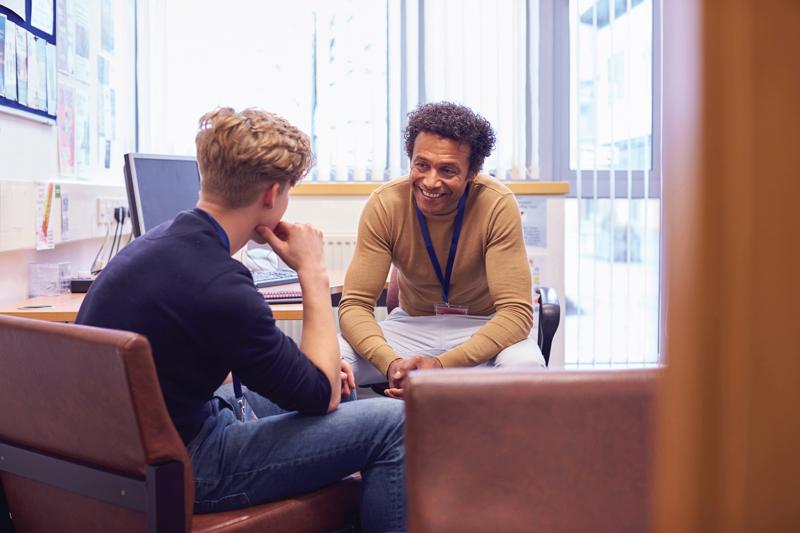Feedback is an essential component of effective learning and a successful classroom. John Hattie cites feedback as one of the top influences on student achievement, with an effect size of 0.73 (Hattie, 2015). However, giving and receiving feedback is much more complex than people often assume it to be. In Thanks for the Feedback, Douglas Stone and Sheila Heen (2014) note that the human brain is wired in a way that makes accepting feedback a challenge. On one hand, people tend to naturally strive for self-improvement, and feedback is a necessary tool for identifying aspects of ourselves to work on. But on the other hand, people also have a psychological need to feel accepted, and so we may dismiss feedback in order to avoid feeling rejected. Most of us can admit to feeling this internal tug-of-war with feedback at times in our lives and careers. Now imagine students going through this same internal struggle while they are also developing their sense of self and identity.
With all of these psychological forces at play, how can teachers support students in learning to receive feedback productively? There are amazing ways to give students timely and effective feedback. However, even the best feedback strategies won't boost student achievement if we educators don't do the ground work of creating a psychologically and emotionally safe feedback culture in our classrooms. Although creating this culture is not an easy process, the following are some ideas for getting started.
Model Feedback
The biggest influencer in creating a feedback culture is whether the person in charge, in this case the teacher, models the act of pursuing and receiving feedback. When students see someone with authority whom they admire actively seeking and learning from feedback, it makes the process more acceptable and less threatening. They learn that feedback isn't a rejection or a negative, but part of the ongoing learning in which everyone at all levels engages. This approach means that teachers need to make their own processes of soliciting and learning from feedback evident to students.
- Join the #ObserveMe movement. Put a sign outside your room where you ask for feedback from colleagues on your teaching goals and practices.
- Ask your students for feedback often—do an exit ticket or online survey. It can be detailed, or it can be as simple as "What's one thing that could improve this class?"
- Be imperfect. Allow yourself to purposely (or not so purposely) make mistakes and invite students to identify them. When students notice a mistake, model how you hope students will respond to feedback. Thank students and think aloud or otherwise demonstrate how you will apply the feedback.
Separate Evaluation from Feedback
The human psyche is not wired to handle evaluation feedback and coaching feedback at the same time (Stone & Heen, 2014). For students, this means if there is a grade on their work (evaluation feedback), they will focus on the grade and not any other feedback that might be provided (coaching feedback). Everyone has had students who, despite all the well-intentioned feedback written on the page, take one look at the grade and toss the assignment aside. Instead of working to earn a grade, we want students to work to learn.
- Experiment with handing back assessments without grades. Alternatively, provide grades only after students have made revisions based on feedback. Depending on the grade level, you may get some pushback at first. However, once students understand the process and outcomes, their brains will shift from grade receivers to ongoing learning seekers. This method also emphasizes that feedback is not merely for review, but an essential piece of their classroom learning.
- Grade less. If learning is truly valued, taking away many of the evaluative components of the classroom environment will help students feel more comfortable taking risks and engaging in continuous learning.
Reward Improvement
Sometimes a little extrinsic motivation can help build the stamina and interest for internal motivation to take root.
- Allow for redos and retakes for full credit. This policy is a concrete way to reward the improvement effort. However, make sure that the redos and retakes occur only after the student has engaged in improving their work in response to feedback.
- Positively praise students who demonstrate receiving feedback well. Making their actions the ideal, and then the norm, of the classroom can go a long way with the students who are unsure of how to react.
- Celebrate before-and-after examples—through modeling of the students' work, using it in parent-teacher conferences, or creating a display of student learning. In this way students know that it is the effort and process of learning that is valued, not just the end result.
Creating a positive classroom culture around feedback takes consistent effort and thought. However, the benefits eventually begin to snowball into a classroom of engaged and reflective learners. When the culture of the room is one that truly values the learning process, then students can become comfortable enough to grapple with their own imperfections and accept feedback as part of their growth.







